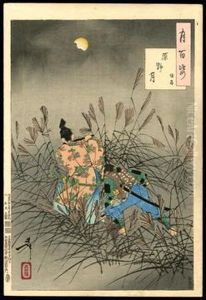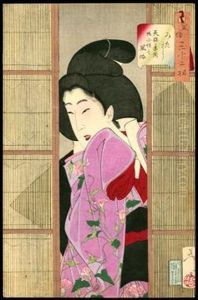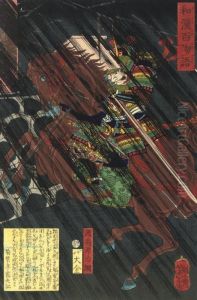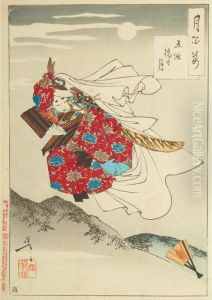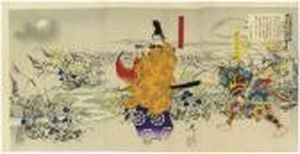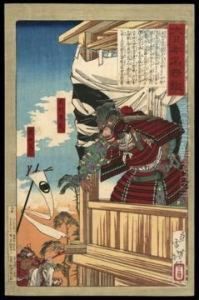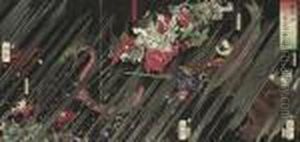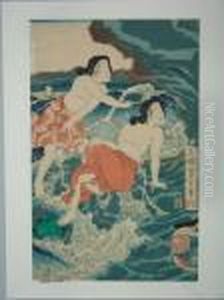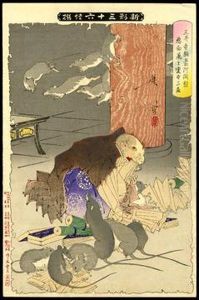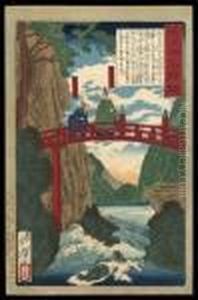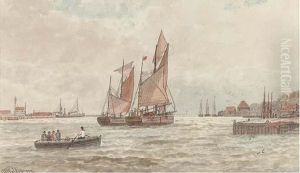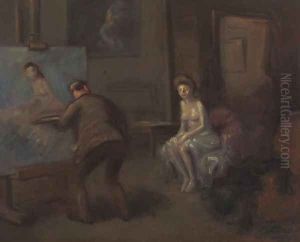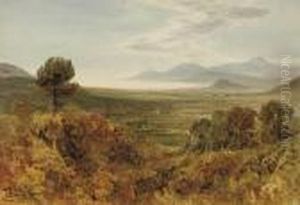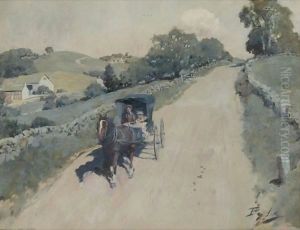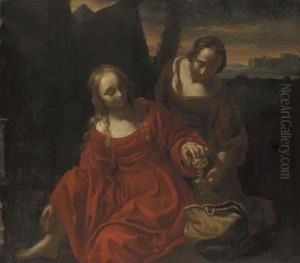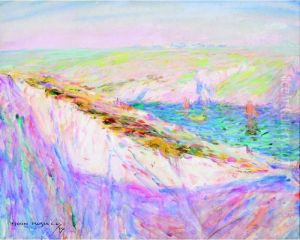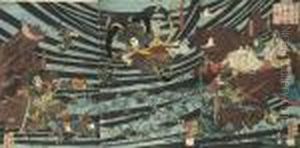





His First Print, A Triptych Showing The Heike Clan Sinking Into The Sea, Published By Maruya Yinpachi, In 1853, Very Rare, Good Impression, Colour And Condition, Slightly Stained Towards The Top; And Two Other Triptychs By Yoshitoshi, In Fair Gene
-
About Reproduction
Discover the allure of art with our faithful reproduction of "His First Print, A Triptych Showing The Heike Clan Sinking Into The Sea, Published By Maruya Yinpachi, In 1853, Very Rare, Good Impression, Colour And Condition, Slightly Stained Towards The Top; And Two Other Triptychs By Yoshitoshi, In Fair Gene", originally brought to life by the talented Tsukioka Kinzaburo Yoshitoshi. Unlike posters or prints, our hand-painted oil painting breathes an unique sense of depth and texture into your space. Every detail, every stroke, and every texture is meticulously recreated, paying the perfect homage to Tsukioka Kinzaburo Yoshitoshi and his artistic vision.
Owning this piece is more than just decoration - it's a statement of your refined taste in art. Let the vibrant colors and intricate details of this replica serve as a daily reminder of the beauty in our world. Elevate your decor and appreciate the richness of art with our replica of this masterpiece.
-
Painting Description
"His First Print, A Triptych Showing The Heike Clan Sinking Into The Sea, Published By Maruya Yinpachi, In 1853, Very Rare, Good Impression, Colour And Condition, Slightly Stained Towards The Top; And Two Other Triptychs By Yoshitoshi, In Fair Gene" is a notable work by Tsukioka Kinzaburo Yoshitoshi, a distinguished Japanese artist of the ukiyo-e genre, known for his woodblock prints and paintings. Born in 1839, Yoshitoshi is considered one of the last great masters of the ukiyo-e tradition, and his work is characterized by its vivid imagery, innovative techniques, and often, a fascination with the macabre and the supernatural.
This triptych, created in 1853 when Yoshitoshi was just 14 years old, is significant as it marks the beginning of his prolific career as a printmaker. The piece depicts the dramatic and tragic scene of the Heike clan's demise, as they sink into the sea after their defeat in the Genpei War—a pivotal conflict in Japanese history that culminated in the establishment of the Kamakura shogunate. The choice of subject matter reflects the Edo period's (1603-1868) fascination with historical tales and the samurai ethos, themes that Yoshitoshi would revisit throughout his career.
Published by Maruya Yinpachi, the triptych is noted for its rarity and the quality of its impression, color, and condition, despite slight staining towards the top. As with many ukiyo-e prints, the condition of surviving impressions can vary significantly, and this particular work is distinguished by its state of preservation.
The mention of "two other triptychs by Yoshitoshi, in fair gene" suggests that the work is part of a larger collection or set of prints by the artist. However, without additional context or titles, it is difficult to provide further details on these accompanying pieces.
Yoshitoshi's work is highly regarded for its artistic merit and historical significance, offering insight into the cultural and societal shifts occurring in Japan during the late Edo and early Meiji periods. His First Print, A Triptych Showing The Heike Clan Sinking Into The Sea, stands as an early testament to the talent and potential of an artist who would go on to leave a lasting impact on the world of Japanese art.
-
Lead Time & Shipping
When you order this oil painting replica, it typically takes 2-3 weeks to paint. If the artwork is more complex, it might need a little more time to ensure the best quality. Once it's ready, we'll send you a photo for your approval. After you give the green light, we'll ship it to you for free.
-
Return & Refund
We believe in the quality of our hand-painted oil painting reproductions, and your satisfaction is our priority. If for any reason, you are not completely satisfied with your purchase, we offer a 45-day return policy. You can return your artwork within 45 days of receipt and receive a full refund. Please note that the artwork must be returned in the original packaging and in the same condition as it was received.





